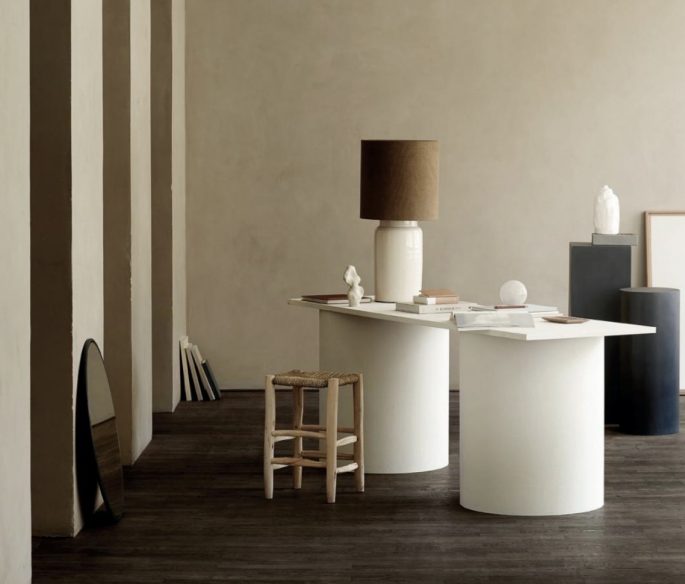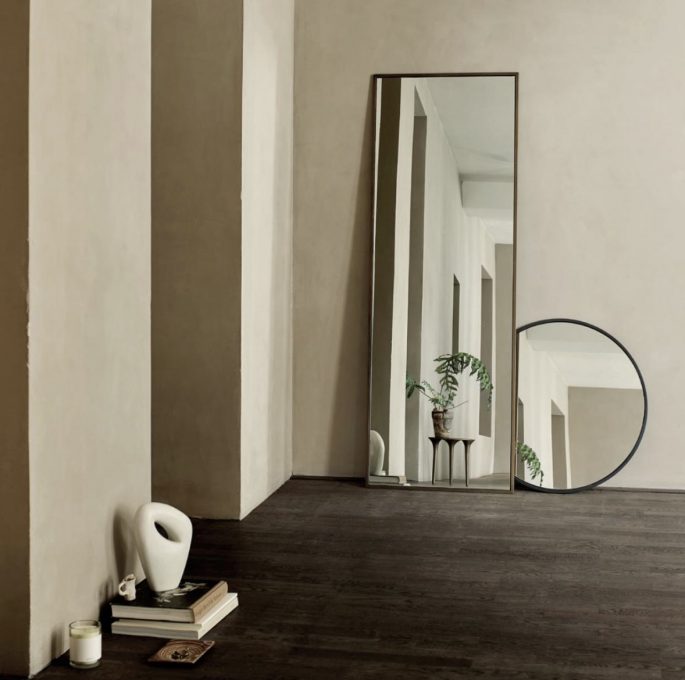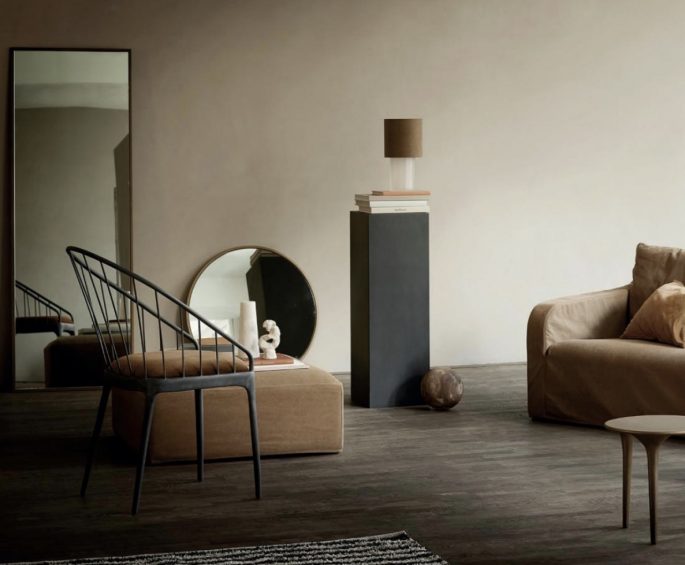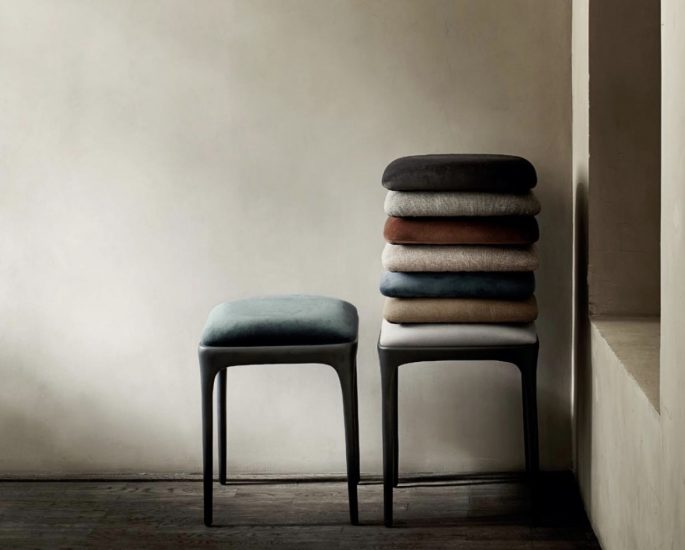Retail has been in a state of flux for years, an industry built on brick and mortar in a world now populated by smartphones and featuring ever-quicker home delivery from the web. There is also increased competition from brands that have built their followings through social media. And, of course, there’s that little company called Amazon.
But eagle-eyed consumers may be able to reap the rewards – and help keep bricks-and-mortar stores afloat. Leading homeware retailers are enthusiastically rising to the challenge, they are using the downturn to listen to customers, examine the data, test and learn, ensure sustainability is high on the agenda, and invest in design and technology to future-proof their businesses – and that’s all good news for the consumer.
After all, most people want to spend less time shopping, not more.

It’s important to make things feel local and personal. Tine K ‘SLOW’ AW 19 Catalogue, tinekhome.com
Amid all the changes, one thing remains consistent: Consumers are becoming more powerful with expectations of having it all.
Last year, left the industry with a lot to digest, and yet, there is a positive side. Inventive retailers can flourish and constant innovation is vital. More stores will incorporate the kind of digital data that has powered the online world. Here are six tips from experts that brands can follow to ensure they survive and thrive.

We all shop in a multitude of ways, from a quick online buy to a leisurely day of retail therapy. Tine K ‘SLOW’ AW 19 Catalogue, tinekhome.com
1. THE CUSTOMER IS ALWAYS RIGHT
Consumer behaviour has never been so fast-paced and in flux – just look at the current rethinking on single-use plastics. Retailers are waking up to this. ‘You can’t stand still; constant reinvention is essential. No-one can plan a five-year strategy now,’ says Stephen Briars, creative director of the Conran Shop. ‘We have to reinvent constantly to stay afloat and grow different aspects of the business.’ At the core of this growing e-commerce (many brands are aiming for this to account for 50 percent of turnover), but more generally, operators need to be light on their feet and able to react and adapt according to changing consumer behaviour. Progressive retailers are trialling a range of models, from social media initiatives to bricks and mortar – take the Mini Habitat outposts in Sainsbury’s, the way in which independents such as Cult have opened new pop-ups at Woollahra this month to target the industry professional.
2. E-COMMERCE WILL SAVE OUR STORES
We all shop in a multitude of ways, from a quick online buy to a leisurely day of retail therapy. All the operators we spoke to have faith in the high street, but as Clare Askem, Habitat’s managing director, says, ‘customers shop in an omnichannel way,’ and brands need to offer consistency across the board. ‘E-commerce and bricks and mortar are always completely entwined,’ explains Peter Ruis of Anthropologie. ‘No-one will buy one of our sofas without sitting on it in-store first.’
You only have to consider how many e-commerce brands, such as MatchesFashion.com, have opened bricks-and-mortar stores to see that both analog and digital shopping need to co-exist.
Research shows that with almost every homeware purchase, two-thirds of customers have used both channels. So, shops are here to stay and are set to offer more to the consumer in both convenience and experience. Many of the new stores are supposed to be all things to all shoppers; customers can order online and pick up at the store. They can order online and have their purchases delivered home, in some cases, on the same day.

Consumer behaviour has never been so fast-paced and in flux – retailers are waking up to this. Tine K ‘SLOW’ AW 19 Catalogue, tinekhome.com
3. UNIQUE MERCHANDISING WILL TRIUMPH
The homeware shopper is braver and bolder in their tastes, and our buying needs to reflect that. Social media – particularly Instagram and Pinterest – has the potential to turn everyone into an amateur stylist. Expressing ourselves via our homes has never been so important. Bryony Sheridan, buyer at Liberty agrees. ‘The social and economic climate is forcing us to socialise at home and encouraging us to invest more energy and income into creating a home, even if we’re renting,’ she reasons. ‘Shopping should be an experience.’ Stores need to surprise, inspire and offer a sense of discovery, with well-informed staff to entice and retain the increasingly design-savvy consumer.
Expect cross-category merchandising and fewer trend-laden room sets, because although shoppers are inspired by themes, they don’t buy that way – instead, they mix and match more organically.
Coloured and patterned tableware is matching and exceeding sales of plain white dinnerware for the first time. Differentiation is also key. Homewares are more about collectibles – unique treats at sensible prices, such as hand-thrown pots or jugs. As Ruis says: ‘If you have a unique assortment that is just yours, then you will be fine.’ All of which is good news for the consumer, as we can expect to find more unique pieces and exclusive, own-brand designs in store.
4. SHOPS NEED TO BUILD STRONG COMMUNITY RELATIONS
A vital ingredient of a healthy store is connecting with the local community, whether that’s by working with regional suppliers or designers or inviting customers to in-store events. Such an approach is driving Anthropologie’s expansion, says Ruis. ‘It’s important to make things feel local and personal,’ explains Askem of UK Habitat’s strategy. ‘In Brighton, we collaborated with local artists, turning their artworks into rugs, and in Leeds, we recently invited a local interior designer to give a talk.’ Heal’s runs it annual Festival of Light, showcasing the latest lighting products from brands worldwide. Meanwhile, SCP hosts events in conversations with prominent interior design names such as Matthew Hilton and Ilse Crawford. Such programs are a positive way to inspire and educate the customer, while also building loyalty.

Design has never been so important with retailers expanding their teams of in-house designers. There is also less emphasis on big-name designers. Tine K ‘SLOW’ AW 19 Catalogue, tinekhome.com
5. DESIGN WILL LEAD THE WAY
Pioneering homeware retailers recognise that investing in design is key to differentiation and a rosy future. The Conran Shop is leveraging partnerships with major brands to release exclusive pieces. ‘All 25 of our limited-edition chairs with Vitra sold out in four weeks.’ says Briars. In addition, the brand is collaborating with and sponsoring emerging and younger designers and brands to broaden its audience and appeal to a 20- to 35-year-old demographic. ‘Design has never been so important,’ agrees Philippa Prinsloo, head of design at John Lewis & Partners, who has expanded her in-house team by a third to 28 designers, with five principles framing the output – one being ‘future-focused’.
There is also less emphasis on big-name designers.
‘We felt that creating that capability to design ourselves was necessary going forward,’ adds Marsh. Meanwhile, the Heal’s Discovers program continues- the inaugural showcase 15 years ago gave Russell Pinch a springboard into business- albeit in a new format adapted for the tougher retail climate. ‘Rather than just developing one-off products, we pledge to work with graduates for a year, helping them with marketing, PR, finding buyers- something money can’t buy,’ explains Mansbridge.
6. VIRTUAL REALITY WILL CHANGE THE WAY WE SHOP
There is a fresh impetus to combine digital tools with well-informed staff to make buying convenient for customers, with improved visualisations software in stores. Technology must add value and convenience. Stores are investing in new virtual-reality tools to make it easier to see what furniture will look like in your own home. This will enable more confident purchasing.

Our homeware is more about collectibles – unique treats at sensible prices. Tine K ‘SLOW’ AW 19 Catalogue, tinekhome.com


